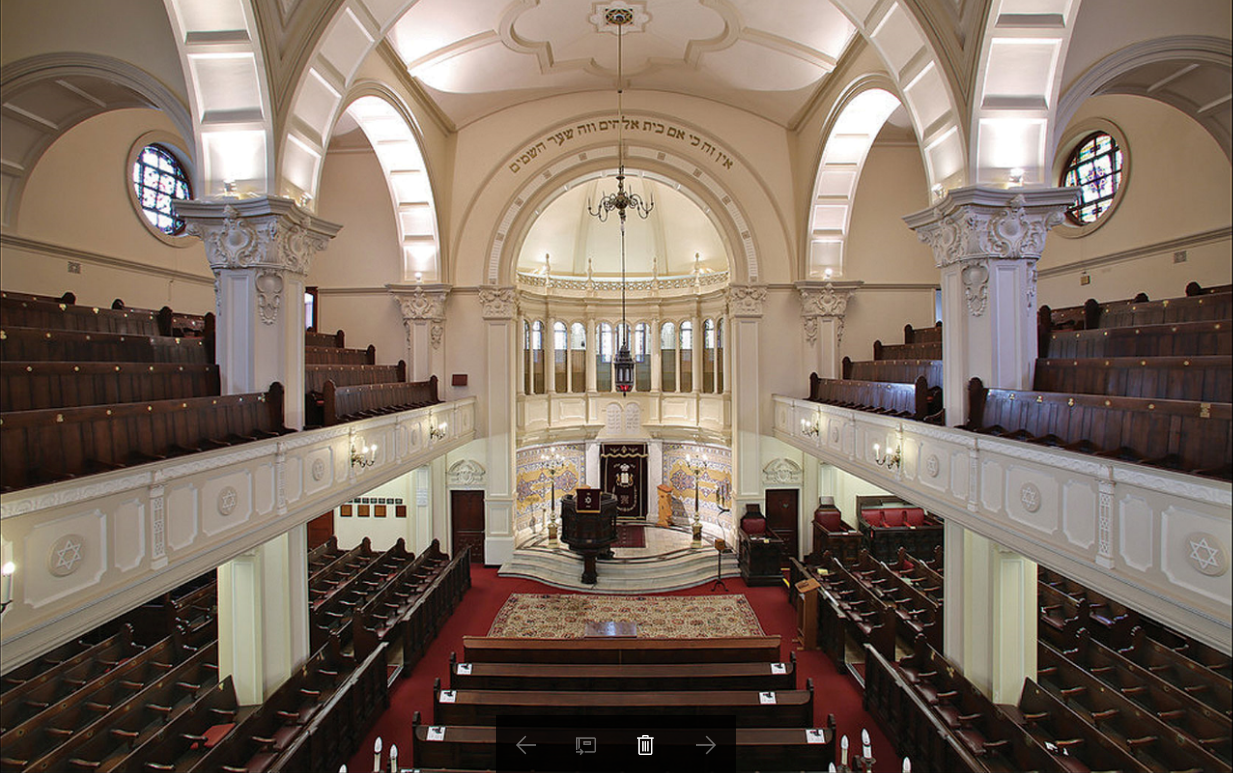
The Cape Town Hebrew Congregation, which built the Great Synagogue, was founded in 1841. This makes it, after the Sydney Hebrew Congregation, the oldest Jewish congregation in the Southern Hemisphere! Until the 17th Century the history of Jewry had been played out in the relatively confined geographical Area of the Middle East, North Africa and Eurasia. Beyond these Regions it did not spread until, on the back of the Colonial expansion of Europe overseas, fledgling Jewish communities were created in the Americas, Australasia and sub-Saharan Africa. Thus, the establishment of the Cape Town Hebrew Congregation (Tikvat Yisrael) in 1841. This Shul should be viewed as part of a relatively recent expansion of Jewry under the aegis of the Dutch, French and British Empires. In the case of the Cape, though a Colonial Settlement was founded by the Dutch East India Company, in the mid 17th Century, the Company did not allow any form of Public Worship other than Protestant Christianity. Thus, although some apparently Jewish names do appear in the Company’s Cape records, it is clear that Judaism was not openly practiced, if at all! The strange irony of these religious laws was that Dutch Jews, who eventually became the majority shareholders of the Dutch East India Company, never attempted to liberalize the Company’s laws of worship. In contrast, the Dutch West India Company, which controlled the areas of what became New York, New Jersey, Connecticut and Delaware, always allowed freedom of worship! This religious intolerance remained official policy at the Cape until 1804 when the Company’s short-lived successor Dutch regime, the Batavian Republic, inspired by the Enlightenment ideals of the French Revolution, removed the ban on religious freedom! Even then, the number of Jews at the Cape was so small and so assimilated, that it was not until the 1830’s that economic opportunities were able to draw sufficient Jews from Europe to what by then had become a British Colony, to achieve the critical mass needed to try and set up a Jewish congregation. A first attempt to do so in Grahamstown in 1838, did not get off the ground, while in Cape Town “several ineffectual attempts” were made “to collect a sufficient number of Israelites for the purpose of Divine worship according to the Mosaic Law, wherein it is commanded that no less than 10 males of 13 years of age can constitute a Congregation for general Public prayers of Israelites.” The arrival in Cape Town in 1839 of Benjamin Norden, an enterprising and dynamic 1820 Settler from Grahamstown, with a record of Public Service there, seems to have been decisive in turning these failures around! On the eve of the Day of Atonement, 26 September 1841, Kol Nidrei night 5602. 14 Men, 3 Boys and, presumably, some Women of the Jewish Faith, (though the male-blinkered records do not mention the women)! Met in his new house, Helmsley Place, in Hof Street, and held a Service in accordance with the Orthodox tradition. This Site Today, forms part of the Mount Nelson Hotel. Eight days later, on 3 October (Chol Hamo’ed Sukkoth), 10 of these men met at the Loop Street house of another of the Worshippers, Simeon Marcus, to take their hopeful initiative a step further by establishing the Society of the Jewish Community of Cape Town, Cape of Good Hope (which became the Cape Town Hebrew Congregation), known in Hebrew as Tikvat Yisrael (‘Hope of Israel’). Very soon it followed this up with regular Shabbat and Festival services in the Homes of its leading members. The fledgling Congregation’s other initial step was that standard practice in new Jewish Communities, the acquisition of Land for a Jewish Cemetery. The new Municipality of Cape Town turned down its request for the customary free Grant of Land for a cemetery and instead required it to pay £10 for a plot on Somerset Road. Miffed at this refusal and at the proximity of the offered site to a slave cemetery – which it supposedly took as a sly reference to Jews being descended from slaves in Egypt – the Congregation withdrew its application and instead used funds generated by the sale of Land Donated to it by an Out-of-Town supporters, to purchase a plot in Woodstock for burial purposes. A stone Wall was built around the new cemetery and a Tahara house erected, thanks to a donation by Benjamin Norden. The first person to be buried there was one of the Congregation’s founder members and trustees, the 41-year old Abraham Horn, a Rhinelander, who died in December 1844. His posthumously-born son, Charles, was the first child whose name was recorded in the new Congregation’s Register of Jewish births in 1845.
https://www.lonelyplanet.com/south-africa/cape-town/attractions/great-synagogue/a/poi-sig/1015372/355612
http://gardensshul.co.za/https://web.facebook.com/gardensshul/?_rdc=1&_rdr
http://www.theheritageportal.co.za/article/old-synagogue-gardens